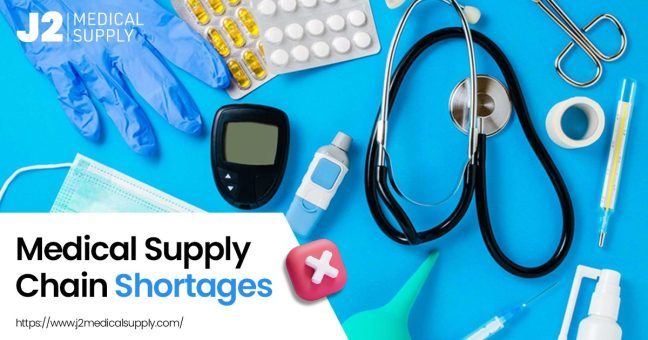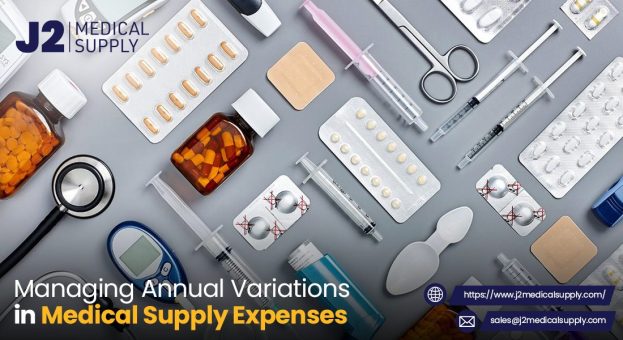The medical device supply chain plays a critical role in ensuring the availability and timely delivery of essential healthcare equipment. However, the healthcare industry has been grappling with shortages of medical devices, resulting in delayed patient care, increased costs, and compromised patient safety. In this article, we will delve into the intricacies of the medical device supply chain, examine the factors contributing to shortages, and explore strategies to tackle these challenges effectively.
Addressing Medical Device Supply Chain Disruptions | Tackling Medical Device Supply Chain Shortages in Healthcare
The medical device supply chain encompasses a complex network of manufacturers, distributors, suppliers, healthcare facilities, and regulatory bodies. It involves multiple stages, from the sourcing of raw materials to the manufacturing, distribution, and delivery of medical devices to end-users. Each stage is critical in ensuring a smooth flow of products and meeting the healthcare industry’s demands.
Components of the Medical Device Supply Chain
The medical device supply chain comprises various entities and processes, including:
- Manufacturers: Responsible for designing, developing, and producing medical devices.
- Suppliers: Provide raw materials, components, and specialized parts required for the manufacturing of medical devices.
- Distributors: Facilitate the movement of medical devices from manufacturers to healthcare facilities and other end-users.
- Healthcare Facilities: Procure and utilize medical devices to provide patient care and treatment.
- Regulatory Bodies: Enforce quality standards, conduct inspections, and ensure compliance with regulations governing the production and distribution of medical devices.
Challenges Faced in the Supply Chain
The medical device supply chain is susceptible to various challenges that can disrupt the flow of products and contribute to shortages. Some of the key challenges include:
- Quality Problems and Regulatory Issues: Stringent regulatory requirements and quality issues can lead to manufacturing delays, recalls, and shortages of specific medical devices.
- Geopolitical and Trade Considerations: Political tensions, trade disputes, and export/import restrictions can impede the timely delivery of medical devices, especially when they rely on global supply chains.
- Natural Disasters and Supply Disruptions: Events such as earthquakes, hurricanes, or pandemics can disrupt manufacturing facilities, transportation networks, and suppliers, causing delays and shortages.
Factors Contributing to Shortages of Medical Devices
Several factors contribute to the occurrence of medical device shortages. It is essential to understand these factors to develop effective strategies for prevention and mitigation.
● Quality Problems and Regulatory Issues
Quality problems and regulatory issues which can include manufacturing defects, non-compliance with quality standards, and regulatory challenges can lead to production delays, recalls, and shortages. Stricter regulations and increased scrutiny regarding product safety and efficacy have contributed to the identification and rectification of quality problems, but they can also result in disruption in the domestic supply of certain devices
● Geopolitical and Trade Considerations
Geopolitical factors and trade considerations can disrupt the supply chain of medical devices. Trade disputes, import/export restrictions, tariffs, and customs regulations can hinder the timely movement of products across borders. Political tensions or shifts in international relationships can also impact the sourcing of raw materials and components, leading to shortages in certain regions.
● Natural Disasters and Supply Disruptions
Natural disasters, public health emergencies, and unforeseen events can cause significant disruptions in the medical device supply chain. Disruptions can occur due to the damage or closure of manufacturing facilities, transportation infrastructure, or suppliers’ operations. Events like earthquakes, hurricanes, pandemics, or unforeseen disruptions in the availability of critical components can lead to shortages and delayed deliveries.
Impacts of Medical Device Shortages
The shortages of medical devices have far-reaching implications for healthcare systems, patients, and the overall delivery of care. The following are some of the key impacts associated with medical device shortages:
1. Delayed Patient Care and Treatment
Shortages of medical devices can result in delayed patient care and treatment. When healthcare facilities do not have access to essential devices, procedures and interventions may be postponed or canceled, affecting patients’ well-being. Timely diagnosis, monitoring, and treatment may be compromised, leading to potential health risks and prolonged recovery times.
2. Increased Healthcare Costs
Medical device shortages can significantly increase healthcare costs. In some cases, facilities may need to resort to alternative, more expensive options or source devices from different suppliers, which can drive up expenses. The financial burden is often passed on to patients, insurance providers, and healthcare systems, straining budgets and resources.
3. Compromised Patient Safety
The lack of available medical devices can compromise patient safety. When healthcare providers are unable to access necessary equipment, they may be forced to make suboptimal decisions or use devices beyond their intended use, potentially jeopardizing patient well-being. Inadequate or unavailable devices can also increase the risk of healthcare-associated infections and other complications.
Addressing and Tackling Medical Device Supply Chain Shortages
To tackle medical device supply chain shortages effectively, a comprehensive and collaborative approach is necessary. Here are some strategies and measures that can be implemented:
1. Enhancing Collaboration and Communication
Strengthening collaboration and communication among all stakeholders in the medical device supply chain is vital. Improved transparency, information sharing, and forecasting can help identify potential shortages and proactively address them. Open lines of communication between manufacturers, distributors, suppliers, and healthcare facilities can facilitate prompt action and effective problem-solving.
2. Diversifying Supplier Networks
Overreliance on a limited number of suppliers can increase vulnerability to shortages. Diversifying supplier networks by engaging multiple manufacturers and distributors can enhance supply chain resilience. Building relationships with alternative suppliers, both domestic and international, can help mitigate the impact of disruptions and reduce dependence on a single source.
3. Investing in Resilience and Redundancy
Investing in supply chain resilience and redundancy is essential to minimize the impact of shortages. This includes implementing contingency plans, developing stockpiles of critical devices, and establishing backup manufacturing and distribution channels. By having alternative options readily available, healthcare facilities can navigate through shortages more effectively.
4. Implementing Efficient Inventory Management Systems
Effective inventory management plays a crucial role in addressing supply chain shortages. Leveraging advanced technology, data analytics, and forecasting models can aid in optimizing inventory levels, demand forecasting, and proactive replenishment. Streamlined inventory management processes can help identify potential shortages in advance and enable timely procurement and distribution of medical devices.
5. Public Health Emergencies and the Importance of Preparedness
Public health emergencies, such as pandemics or natural disasters, underscore the importance of preparedness in the medical device supply chain. Establishing emergency response plans, stockpiling critical devices, and ensuring robust supply chain infrastructure are essential to mitigate the impact of unforeseen events. Preparedness measures can help expedite the delivery of necessary medical devices during times of crisis.
Conclusion
Addressing medical device supply chain shortages requires a comprehensive and collaborative approach. By understanding the complexities of the supply chain, identifying contributing factors, and implementing proactive strategies, healthcare systems can mitigate the impact of shortages. By prioritizing these efforts, healthcare systems can strive to minimize the occurrence of medical device shortages and provide optimal patient care. J2 Medical Supply is a trusted provider of medical devices, offering a reliable source for healthcare facilities to access quality products and contribute to tackling supply chain shortages in the healthcare industry.




